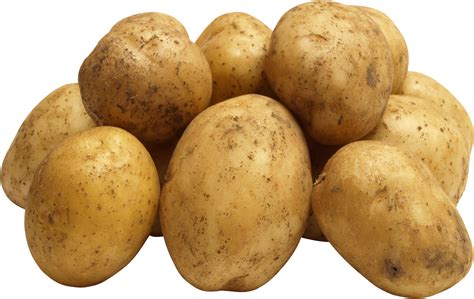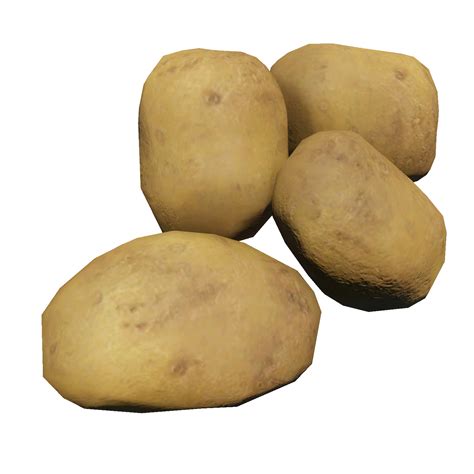To ensure that your potato plants grow to their full potential, it’s important to provide them with enough water. Without sufficient water, the tubers won’t grow very large. It’s also important to make sure that the foliage isn’t competing with the tubers for water, as the foliage will be given priority. To prevent this, aim to give your potato plants around 2 inches of water per week after they start flowering.
You can also use straw to help retain moisture in the soil and keep your plants hydrated.
How do you increase the size of a potato?
A well-balanced diet is crucial for enhancing the size of potato tubers. Studies have demonstrated that various nutrients, including nitrogen, phosphate, potassium, calcium, magnesium, and manganese, can impact the size of potato tubers. Therefore, it is essential to ensure that the soil has an adequate supply of these nutrients to promote healthy and robust potato growth. By providing the right nutrients, farmers can increase their potato yields and produce high-quality crops.
What are the reasons for small potatoes?
There are several factors that can contribute to the growth of small potatoes. These include insufficient exposure to sunlight, improper watering, nutrient deficiencies, high temperatures, and premature harvesting. Additionally, certain potato varieties may naturally produce smaller potatoes, and even the potatoes on a single plant can differ in size.
Do potatoes need a lot of water to grow?
Potatoes require varying amounts of water at different stages of their growth to achieve optimal yields. Typically, potatoes need about 1-2 inches of water per week, which can be supplied by rainfall or manual watering. It’s important to note that the amount of water required may vary depending on factors such as soil type, temperature, and humidity. Therefore, it’s crucial to monitor the soil moisture levels regularly and adjust the watering schedule accordingly.
By providing the right amount of water at the right time, you can ensure that your potatoes grow healthy and produce a bountiful harvest.
What can I do with tiny potatoes from harvest?
There are many delicious and creative ways to use tiny potatoes from harvest. One option is to roast them with herbs and spices for a flavorful side dish. Another idea is to boil them and toss them with a vinaigrette for a tasty potato salad. You could also slice them thinly and use them as a topping for homemade pizza or incorporate them into a hearty vegetable soup.
Additionally, tiny potatoes can be mashed or smashed for a unique twist on traditional mashed potatoes. The possibilities are endless, so get creative and enjoy the bounty of your harvest!
What makes potatoes grow big?
If you’re looking to grow bigger potatoes, it’s important to give the plants enough space to absorb nutrients and water. One effective method is to plant the seed potatoes at a distance of 24 inches or 60 centimeters apart, which is larger than the typical recommendation of 15 inches or 45 centimeters. By providing more room for the plants to grow, you can increase the likelihood of producing larger potatoes.
Why are my potatoes not getting big?
To ensure that your potato plants grow to their full potential, it’s important to provide them with enough water. Without sufficient water, the tubers won’t grow very large. It’s also important to make sure that the foliage isn’t competing with the tubers for water, as the foliage will be given priority. To prevent this, aim to give your potato plants around 2 inches of water per week after they start flowering.
You can also use straw to help retain moisture in the soil and keep your plants hydrated.
What affects potato size?
When it comes to growing tubers, the size of the seed used can have a significant impact on the size of the resulting tubers. In fact, research has shown that using small seed can actually lead to larger individual tubers than using larger seed with the same spacing. This is because small seed tends to produce fewer but larger sprouts per tuber, which can ultimately lead to bigger tubers overall. On the other hand, larger seed tends to have a greater number of sprouts per tuber, which can result in smaller individual tubers.
It’s also worth noting that medium-sized seed falls somewhere in between these two extremes in terms of sprout production and tuber size.
Do potatoes need a lot of nitrogen to grow?
The role of nitrogen in plant growth and development cannot be overstated. It is a crucial element for vegetative growth and protein synthesis. Nitrogen is also essential for the photosynthetic process, which converts solar energy into carbohydrates that are stored in the tuber. Potatoes, in particular, require high levels of nitrogen to thrive.
However, the timing of nitrogen application is equally important as it can significantly impact potato yield and quality. Therefore, it is essential to understand the role of nitrogen in potato growth and apply it at the right time to achieve optimal results.
Which fertilizer to use for potatoes?
If you’re looking to grow potatoes, it’s important to know the right NPK ratio for optimal growth. For the initial planting, a ratio of 15-15-15 is recommended. However, as the potatoes mature, they require different nutrients. During the first couple of months, they need plenty of nitrogen, so a fertilizer with an NPK of 34-0-0 is ideal.
As the harvest approaches, the plants require more potassium, so a ratio of 12-12-17 or 14-7-21 is best for the last few months before harvest. By using the right NPK ratio at the right time, you can ensure healthy and abundant potato growth.
Is urea good for potatoes?
When it comes to growing potatoes, choosing the right fertilizer is crucial. Urea Fertilizer, Trace Elements Helatine Potato, and Jobe’s organic all-purpose granular fertilizer are some of the best options available. Potatoes require a higher amount of nitrogen (N-P-K 34-0-0) during the initial two months of growth as the foliage develops rapidly. It’s important to choose a fertilizer that provides the necessary nutrients for healthy potato growth and development.
Do potatoes need a lot of fertilizer?
Potatoes are known for their high nutrient demand, but unfortunately, they often grow in soil with low native fertility. This means that they require a lot of fertilizer to thrive. However, with continued use of fertilizers, the soil test levels of certain nutrients can build up over time.
Do potatoes need full sun?
If you’re looking to grow potatoes, it’s important to keep in mind that they thrive in full sun. These plants are known for their aggressive rooting, so it’s best to plant them in a light, loose, and well-drained soil to ensure the best crop possible. Additionally, potatoes prefer a slightly acidic soil with a pH level between 5.0 and 7.
0. By following these general guidelines, you can set yourself up for success when it comes to growing your own potatoes.
Can potatoes grow in hot weather?
A. Potatoes can be a bit tricky here in North State heat. Potato plants can’t withstand hard frost and plants wither and die once temperatures are consistently over 100 degrees. Additionally, potato plants fail to set many tubers when nighttime temperatures remain over 55 degree.
Can potatoes grow in shade?
Potatoes are a versatile crop that can grow in a range of temperatures, but they tend to prefer cooler weather. Although they can thrive in full sun, they are also able to tolerate partial shade. However, it’s important to note that growing potatoes in partial shade may result in a lower yield and smaller tubers. So, if you want to get the most out of your potato crop, it’s best to plant them in an area with plenty of sunlight.
How long do potatoes take to grow?
Did you know that potatoes take anywhere from 12 to 20 weeks to grow, depending on the variety you choose? If you’re hoping to enjoy fresh potatoes during the summer months, it’s best to plant them in early spring. Interestingly, unlike many other plants, potatoes grow downwards, which means that the part we eat is located at the bottom of the plant, along with the roots.
Are tiny potatoes edible?
Did you know that small potatoes can be more than just cute? They can also be a time-saving solution for cooking. With their small size, they cook quickly and evenly, and require little to no preparation. You can easily roast them by placing them on a sheet pan or boil them in a pot of water without having to do any knife work. So next time you’re in a rush or just looking for a hassle-free cooking option, consider using tiny potatoes.
Can I regrow tiny potatoes?
To grow a potato plant, start by inserting toothpicks into both sides of a potato piece. Then, place the potato on top of a glass of water, ensuring that the eyes are submerged. The toothpicks will hold some of the potato above water, allowing the roots to grow into the water and the leaves to grow towards the top. This simple method is an easy and fun way to grow your own potato plant at home.
What to do with chitted potatoes?
‘You can plant your chitted tubers into pots in a heated greenhouse in mid winter, or into the earth in the first part of spring. Take care not to knock off the chits when planting. ‘
Can you eat tiny new potatoes?
Triple-delimited paragraph:
“`Meditation is a powerful tool for reducing stress levels and promoting overall well-being. For adults who are experiencing high levels of stress in their daily lives, incorporating a regular meditation practice can have numerous benefits. Scientific research has shown that meditation can help to lower cortisol levels, which is the hormone associated with stress. Additionally, meditation has been found to increase feelings of relaxation and improve mood.
Practicing meditation regularly can also lead to improved sleep, reduced anxiety, and increased focus and concentration. Whether you choose to meditate for just a few minutes each day or for longer periods of time, the benefits of this practice can be significant. So why not give it a try and see how meditation can help you manage stress and improve your overall well-being?“`
Related Article
- Why Are My Pomegranate Seeds White?
- Why Are My Plumeria Leaves Curling?
- Why Are My Philodendron Leaves Curling?
- Why Are My Petunias Turning Brown?
- Why Are My Peppers So Small?
- Why Are My Orchids Leaves Drooping?
- Why Are My Orchid Leaves Splitting?
- Why Are My Orchid Leaves Curling?
- Why Are My Onions So Small?
- Why Are My Onions Falling Over?


